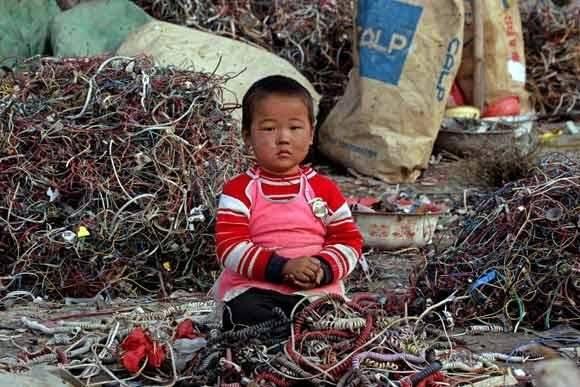
For years, it's been a neck-and-neck race: Samsung, Apple, Sony, and a myriad of other electronics manufacturers have all lauded their ability to reduce their environmental impacts better than the next guy. Whether it's recycling hard-to-get materials and components, or developing new technology that is kinder to the atmosphere, its clear that big tech companies understand that consumers want them to use greener manufacturing processes.
Well, thanks to Greenpeace, consumers can now get the latest skinny on tech manufacturers online. Just in time for Christmas, the 2017 Green Guide to Electronics provides a comprehensive look at 17 electronics companies and their demonstrated commitment to renewable energy, addressing climate change, toxic chemical use and smart product design.
And yes, there are some surprises.
The highest-scoring company is a relatively new arrival: Fairphone, which was launched in 2013 with a mission to be more environmentally sustainable. The fact that it scores high on sustainable design and resource reduction isn't that surprising, since that's part of what has given it commercial traction against the big guys. And according to Greenpeace's assessments, it shows a respectable commitment to reducing hazardous materials in the electronics supply chain and products. But it also has a strong history of providing transparency in its manufacturing cycles, an issue that the researchers feel is very important when claiming kudos for green manufacturing. Where it loses points is in its transparency concerning hazardous materials. It was down-checked not because it doesn't promote transparency, Greenpeace says, but because it doesn't go as far as many of its competitors.
Apple follows in a close second. What's interesting is that the iPhone maker would probably be at the top of the list in accomplishments if it weren't for the grade it received for sustainable design and resource reduction. As far as advocacy goes, says Greenpeace, "Apple has emerged as one of the companies leading the opposition to “Right to Repair” legislation in several U.S. states." They assert it's also helped block environmental standards that would facilitate device designs that would make recycling, repair and upgrades easier.
Where it really excels, says Greenpeace, is in demonstrating its commitment to renewable energy and climate change. It does great at shining a light on its energy usage and performance and displays solid commitment to addressing climate change. But it, too, needs to go further in its reporting standards.
It's worth noting that none of the companies mentioned in the review received an 'A' in all three categories. And with the exception of Fairphone and Apple, all of the electronics companies received mediocre grades ... or worse. The surprising find for me, was HP, which received a C+ for its overall efforts. The company that has opened doors to education for underserved communities around the world and spoken out on the need to "go green" got dinged (it received a C) for its apparent lack of commitment to sustainable design, resource reduction and how it handles its supply chain. But it did great, in the researchers' eyes, when it came to product life extension.
And Greenpeace doesn't fail to underscore the importance of transparency and advocacy here, either. HP's habit of furnishing repair manuals with its products and its efforts to "'promote regulatory frameworks that support efforts to extend our products’ lives through repair and reuse' saved HP from a lower score." Still, the message was clear with HP's C-grade for Advocacy.
The takeaway from Greenpeace's report card isn't just that tech manufacturers can do more, and better to change their manufacturing processes (and priorities). It also illustrates that in a large way, companies are pretty much like humans: they all have their strengths and their weaknesses, and if desired, they can all learn from the other guy's innovative accomplishments.
Flickr image: Anna
Jan Lee is a former news editor and award-winning editorial writer whose non-fiction and fiction have been published in the U.S., Canada, Mexico, the U.K. and Australia. Her articles and posts can be found on TriplePundit, JustMeans, and her blog, The Multicultural Jew, as well as other publications. She currently splits her residence between the city of Vancouver, British Columbia and the rural farmlands of Idaho.














